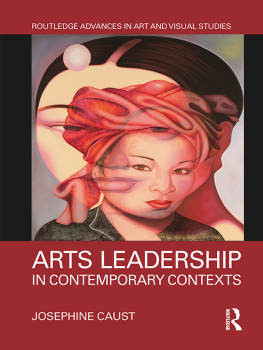The New Psychology of Leadership
The New Psychology of Leadership
Identity, Influence, and Power
S. Alexander Haslam, Stephen D. Reicher, and Michael J. Platow

HOVE AND NEW YORK
First published 2011
by Psychology Press
27 Church Road, Hove, East Sussex, BN3 2FA
Simultaneously published in the USA and Canada
by Psychology Press
270 Madison Avenue, New York, NY 10016
Psychology Press is an imprint of the Taylor & Francis Group, an Informa business
This edition published in the Taylor & Francis e-Library, 2010.
To purchase your own copy of this or any of Taylor & Francis or Routledges collection of thousands of eBooks please go to www.eBookstore.tandf.co.uk.
Copyright 2011 Psychology Press
Cover design by An Design
All rights reserved. No part of this book may be reprinted or
reproduced or utilised in any form or by any electronic,
mechanical, or other means, now known or hereafter
invented, including photocopying and recording, or in any
information storage or retrieval system, without permission in
writing from the publishers.
This publication has been produced with paper manufactured to strict
environmental standards and with pulp derived from sustainable
forests.
British Library Cataloguing in Publication Data
A catalogue record for this book is available from the British Library
Library of Congress Cataloging-in-Publication Data
Haslam, S. Alexander.
The new psychology of leadership: identity, influence, and power /
S. Alexander Haslam, Stephen Reicher, and Michael Platow.
p. cm.
Includes bibliographical references and index.
1. LeadershipPsychological aspects. 2. Identity (Psychology)
I. Reicher, Stephen. II. Platow, Michael. III. Title.
BF637.H4-395 2010
1584dc22
2010015929
ISBN 0-203-83389-9 Master e-book ISBN
ISBN: 9781841696096 (hbk)
ISBN: 9781841696102 (pbk)
Contents
List of figures
2.1 | A typical LPC inventory (after Fiedler, 1964) |
3.1 | The process of depersonalization underpinning the transition from thinking about the self in terms of personal identity (as I) to thinking about the self in terms of social identity (as we) |
3.2 | The role of shared social identity in transforming a collection of disparate individuals into a coherent social force |
3.3 | The difference between power over and power through (after Turner, 2005) |
3.4 | Variation in self-categorization as a function of comparative context |
3.5 | The ongoing and dynamic relationship between social reality, prototypicality, and leadership |
3.6 | Prisoners and Guards in the BBC Prison Study (Reicher & Haslam, 2006b) |
4.1 | Sociograms from the Robbers Cave study (from Sherif, 1956) |
4.2 | Variation in in-group prototypicality as a function of comparative context (adapted from Turner & Haslam, 2001) |
4.3 | English football fans at the 2004 European Football Championships in Portugal (Stott et al., 2007) |
4.4 | Perceived leader fairness as a function of (a) that leaders in-group prototypicality and (b) perceivers social identification (data from van Dijke & de Cremer, 2008) |
5.1 | The group engagement model (after Tyler & Blader, 2000) |
5.2 | Support for a hospital CEO as a function of his allocation of dialysis machine time and the identity of patients (data from Platow et al., 1997, Experiment 3) |
5.3 | Perceived charisma as a function of organizational performance and leader behavior (data from Haslam et al., 2001) |
5.4 | Ideas generated by followers in response to a leaders vision for the future as a function of that leaders prior behavior (data from Haslam & Platow, 2001) |
6.1 | The importance of leaders dress as a dimension of identity entrepreneurship |
6.2 | Leaders whose lives came to define group identity |
7.1 | Leaders who paid a high price for failing to understand the basis of their authority |
7.2 | The building containing Raclawice Panorama |
7.3 | The struggle for leadership in the BBC Prison Study (Reicher & Haslam, 2006b) |
8.1 | The 3 Rs of identity leadership |
8.2 | The leader trap. A social identity model of the rise and fall of the great leader |
List of tables
1.1 | Correlations between personality variables and leadership (data from Mann, 1959) |
1.2 | A representative sample of the sources of leadership secrets and their number (from Peters & Haslam, 2008) |
2.1 | Contextual variation in optimal leader style as predicted by Least Preferred Co-worker (LPC) theory (adapted from Fiedler, 1964) |
2.2 | French and Ravens taxonomy of power and the observed capacity to use different forms of power on others (based on Kahn et al., 1964) |
3.1 | Observers perceptions of leadership-related processes in the BBC Prison Study (data from Haslam & Reicher, 2007a) |
4.1 | Group performance and group maintenance as a function of the process of leader selection (data from Haslam et al., 1998) |
Foreword
The social identity approach to leadership and why it matters
In June 1954, two groups of a dozen 11-year-old boys alighted from separate buses in isolated Robbers Cave State Park in Oklahoma. For the next three weeks these young men would participate in what later became known as the Robbers Cave experiment. For the first week they would live in separation in different parts of the park, as the two groups separately bonded. In this week, one group would kill a rattlesnake and would proudly name themselves the Rattlers. The other group would name themselves the Eagles. In the next week, the groups were brought together to play competitive games. At this point all hell broke loose as the Eagles and the Rattlers competed and fought with each other. Then, in the studys final week, the researchers set cooperative tasks for the boys. This involved them working towards shared goals rather than conflicting ones. This repaired the damage of the previous week and the boys went home on the same bus, with Eagles and Rattlers in some cases even riding together as friends.
Some years later, Henri Tajfel, a University of Bristol professor of social psychology, wondered what would be the minimal intervention that could get boys of approximately this age to divide themselves into separate groups like the boys from Oklahoma. In this and in many subsequent experiments with different co-authors, he found that even the most minimal interventions would cause in-group favoritism and out-group discrimination. In the most famous of these experiments, the subjects were divided into a Klee group and a Kandinsky group, supposedly on the basis of their liking for paintings by these two abstract artists. Although in fact the division was random, the Klees subsequently preferred their fellow Klees and discriminated against those awful Kandinskys, while the Kandinskys symmetrically preferred fellow Kandinskys and discriminated against those awful Klees.












